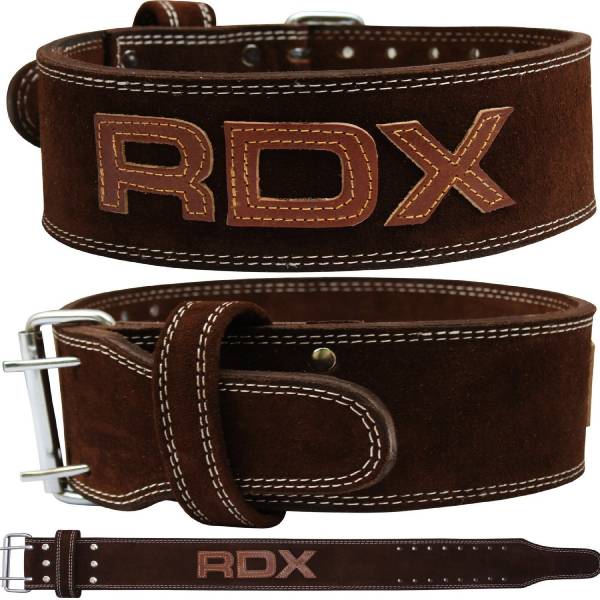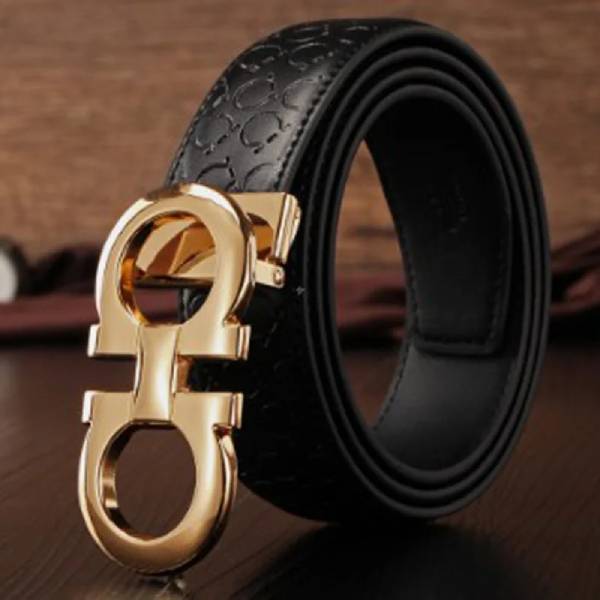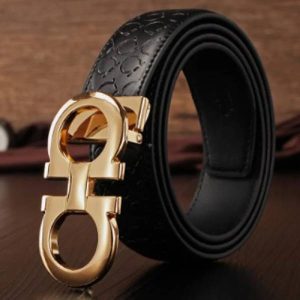Introduction to Weightlifting Belts
Weightlifting belts serve a key role in heavy lifting. They provide support to your lower back and help enhance core stability. This makes lifts like squats and deadlifts safer and often allows you to handle more weight. Weightlifting belts work by increasing intra-abdominal pressure which in turn, supports your spine when handling heavy loads.
When planning heavy lifting, a belt is vital. It acts much like a brace, ensuring your spine remains neutral during the lift. It’s important to use these belts especially when approaching maximum lifts. This will not only help prevent injury but can also give you the confidence to lift heavier.

There are many types of belts, each designed for different lifting needs. Materials can vary from leather, suede to nylon – each offering different levels of support and comfort. Some have prong or lever buckles, both offering secure fastening. Knowing when and how to wear a weightlifting belt is crucial. It can mean the difference between a good and a bad lift, or even between safety and injury.
In this blog, we’ll explore the different types of belts, how to choose the right one, and how to integrate a belt into your training effectively. We’ll also bust some common myths about weightlifting belts and address frequently asked questions. Let’s get started!
The Role of Belts in Enhancing Core Stability
Lifting heavy weights puts your core to the test. A weightlifting belt comes to the rescue. It hugs your midsection, ramping up intra-abdominal pressure. This pressure acts like a supportive column for your spine. It’s not magic, but science behind the increased stability. The belt supports your abs and lower back. Together, they create a pressure bubble. Imagine inflating a balloon in your belly. This is what the belt helps you do. It pushes in as you push out with your core muscles.
The belt doesn’t do all the work, though. You must brace your core as if preparing for a punch. This activates your muscles to work with the belt. The two acting together give you a solid base. It’s like the foundation of a building. Strong and stable. Result? A safer, more powerful lift.
The belt adds a layer of reassurance. It reminds you to keep your core engaged. Preventing your back from rounding or arching too much. This way, you lift with better form. The goal? More weight, fewer injuries.
Safety first, but performance gets a boost too. With extra core support, you might find yourself lifting heavier. The belt helps, so you push past personal bests. It’s a win-win for safety and strength gains.
To get the most out of a weightlifting belt, wear it tight enough. It should allow deep breaths, without restriction. But not so loose that the pressure wanes. Think snug, but not squeezing.
So, do you need a belt for every lift? No. It’s best for heavy, compound movements. Think squats or deadlifts, where your spine is under much load. For lighter sets, leave the belt off. This way, your core muscles can strengthen on their own.
When To Utilize a Weightlifting Belt
Making the decision to strap on a weightlifting belt should be based on several factors. Understanding when to incorporate a belt into your training plays a critical role in both performance and safety. So, let’s discuss the specific scenarios that signal it’s time to buckle up. When considering the use of a weightlifting belt, it’s also helpful to understand how does a belt buckle work, as this knowledge can ensure proper fit and support during heavy lifts, enhancing both performance and safety in your training sessions.
Heavy Compound Lifts
When the weight starts to push your limits, it’s belt time. During heavy squats and deadlifts, your spine faces significant load. A belt can increase your spinal stability. This means better form and reduced injury risk.
Lifting Near Your Max
Trying for a personal record? Use a belt. It helps you maintain proper posture and core pressure. You’ll be more inclined to push the envelope while keeping safety in check.
Training for Powerlifting or Bodybuilding Competitions
Competitors often train as they would perform. If a belt is part of your gear on event day, practice with it. Consistency is key. It lets you build confidence and technique under competition conditions.
When You Need Additional Support
Occasionally, you might feel your core isn’t up to par. A belt acts as an extra support layer. It ensures your lift doesn’t suffer due to a temporary core stability lapse.

By integrating a belt at the right times, you maximize benefits without over-reliance. Use it as a tool, not a crutch. Your core strength is fundamental. So, continue to develop it through belt-free lifts as part of your routine.
Just as a weightlifting belt provides essential support during lifts, a kimono belt name represents the significance of tradition and discipline in martial arts practice, reminding us to strengthen our core skills while responsibly utilizing tools that enhance our performance.
Types of Weightlifting Belts and Their Differences
Choosing the right weightlifting belt is key to lifting success and safety. Different belts suit different lifts. Here’s a breakdown of the main types you’ll come across.
Powerlifting Belts
Powerlifting belts are wide and uniform. They offer strong support across your back. Made from thick leather, they have either lever or prong buckles. These belts hold firm for maximum lifts.
Olympic Weightlifting Belts
These belts are narrower and more flexible. They allow for a wide range of movements. Olympic lifters prefer them for dynamic lifts like snatches or clean and jerks.
Nylon Belts
Nylon belts are lighter and often have Velcro closures. They provide good support with more comfort. They adjust easily, making them a good choice for varied workouts.
Tapered Belts
Tapered belts offer a compromise. They have a wide back for support and a narrow front for movement. These are a versatile choice for general lifting.
Thickness and Width Differences
The thicker the belt, the stiffer it is. This offers more spine support. Width also matters. A wider belt spreads the pressure across a larger area of your back.
Buckle Types
Prong buckles are common and reliable. Lever buckles give you a super tight fit but need tools to adjust. Velcro is the easiest to adjust, but may not hold as tightly.
Knowing these differences helps you pick the right belt. Your choice should fit your lift style and comfort needs. Get a belt that supports your goals and keeps you lifting safely. When selecting a designer men belt, consider the buckle type that best aligns with your lifting style and comfort, as it plays a crucial role in ensuring you achieve your fitness goals safely and effectively.
Selecting the Right Belt: Material, Thickness, and Buckle Types
Choosing the right weightlifting belt involves several factors. Material, thickness, and buckle types are all important. Let’s dive into how each can influence your decision.
Material Matters
Weightlifting belts come in leather, nylon, and suede. Leather belts offer great support and durability. They’re ideal for heavy lifting. Nylon belts are flexible and have a comfortable fit. They suit frequent movement changes. Suede offers a middle ground with decent support and comfort.
Considering Thickness
A belt’s thickness affects its rigidity and support. Thicker belts (usually 10mm to 13mm) provide strong spinal support. They’re preferred for very heavy lifts. However, they may feel too stiff for some users. Thinner belts (around 4mm to 6mm) offer more flexibility and comfort. They’re good for those new to lifting or who prefer more movement.
Buckle Types

Buckles secure the belt during lifts. Prong buckles are the standard and can be single or double. They are secure but can be harder to fasten and remove. Lever buckles allow for a consistent tightness. They’re easy to use but need a screwdriver for size adjustments. Velcro buckles are the easiest to adjust. But, they may not provide as tight a fit as metal buckles.
Choosing a belt is personal. Consider what feels secure, comfortable, and right for your lifting needs. Always ensure the belt fits properly and gives the right amount of support for your workouts.
Proper Usage: How and When to Wear Your Belt
When it comes to weightlifting belts, knowing how to use them is critical. Proper use ensures that you get the most benefit and reduce the chance of injury. Here are some guidelines to follow for when and how to strap in.
Firstly, make sure to wear the belt during intense, heavy lifts. This includes exercises like squats, deadlifts, and overhead presses. For lighter weights and exercises where the spine isn’t heavily loaded, you may not need the belt.
Secure the belt around your waist, just above the hips. It should be tight enough to provide support but still allow for a full range of movement. You should be able to breathe deeply and brace your core without feeling restricted.
Wearing the belt too tight can restrict breathing and movement. If it’s too loose, it won’t provide adequate support. Aim for a snug fit; you should fit one or two fingers between your body and the belt.
The buckle is essential—make sure it’s fastened correctly. Lever buckles offer quick release and consistent tightness, while prong buckles may require more adjustment but can be tightened to your liking.
Don’t rely on the belt for all your lifts. Use it for the heaviest sets or when pushing towards maximum effort. This way, you’ll strengthen your core naturally on lighter lifts.
Remember, the purpose of a weight lifting belt is to enhance, not replace, your lifting technique and core strength. Always strive to maintain proper form and utilize the belt as an added support mechanism for your most challenging lifts.
Debunking Myths: Common Misconceptions About Lifting Belts
In the weightlifting world, many myths about lifting belts exist. Let’s clear some up.
Lifting Belts Weaken Your Core
Some believe that using a belt weakens your core muscles. This isn’t true. The belt acts as an extra support. It helps you lift heavier by increasing intra-abdominal pressure.
Belts Are Only for Heavy Lifters
Not just for the pros! Even beginners can benefit from a belt. It aids in form and safety when learning new lifts.
Belts Can Replace Good Technique
Belts don’t make up for bad lifting form. They enhance your existing technique, not replace it. Always prioritize proper form first.
You Should Always Use a Belt
Not necessary for every workout. Save the belt for heavy lifts and max efforts. This balances core strength and belt support.
By understanding these myths, you can use lifting belts more effectively in your training.
Integrating Belts Into Your Training Routine
Integrating a weightlifting belt into your routine should be strategic and thoughtful. Here are the best ways to ensure you employ the belt effectively:
Start with Beltless Training
Begin without a belt to build core strength. Your focus should be on proper form. Learn to brace your core naturally before adding a belt. This sets a strong foundation for when you do need more support.
Gradual Introduction
Gradually introduce the belt into your workouts. Start by wearing it for your heaviest sets and work down. Use it when you feel you need that extra stability for heavy lifts. The goal is to maintain technique, not to replace it.
Listen to Your Body
Pay attention to your body’s signals. Use the belt when you feel your core needs extra help. Trust your instincts on days when you feel stronger and consider leaving the belt off to build natural strength.
Balance is Key
Keep a balance between belted and beltless lifts. Not all exercises require a belt. Using it exclusively can lead to over-reliance. Include core strengthening exercises to support your beltless lifts.
Practice Makes Perfect
Practice with the belt to get used to the feel and pressure. Before heavy lifts, try using it during warm-ups. This helps you get comfortable with the belt’s presence during your lift.
Consistency in Training
Be consistent with your belt usage. If you’re training for a competition, wear the belt as you will on the day. This builds the necessary muscle memory and confidence in your technique.
Recovery is Important
Allow time for your body to recover. After intense belted sessions, take the time for proper rest and recovery. This is essential to prevent overtraining and injuries.
By following these steps, you’ll make the most of your weightlifting belt and enhance your lifting performance while keeping safety in check.
FAQs: Addressing Common Questions About Weightlifting Belts
Weightlifting belts bring up plenty of questions. Let’s address some common ones to clear any confusion.
Do I Always Need to Wear a Belt?
No. Use the belt for heavy lifts and max training. It’s not for everyday workouts.
Can a Belt Prevent All Injuries?
Not all, but it helps. Belts support your spine, reducing injury risks when lifting heavy.
Will It Weaken My Core?
Incorrect. Belts aid in heavy lifts, but your core strength remains crucial. Keep training it.
What’s Better: Leather or Nylon Belts?
Depends on you. Leather offers rigid support; nylon gives flexibility. Choose what matches your lifting style.
Is There One Best Belt Type?
No. Olympic lifters, powerlifters, and general trainers might prefer different belts. Pick what suits your needs.
How Tight Should My Belt Be?
Snug, but not constricting. It should allow deep breathing and a proper brace.
With these FAQs, you’re on track to making informed decisions about using weightlifting belts. Remember, they’re tools not crutches, so focus on good form and building core strength alongside belt use.
Conclusion: The Importance of Choosing the Right Belt
Selecting the ideal weightlifting belt is critical for any lifter. The right belt can provide the necessary back support, enhance core stability, and increase lifting performance. It’s not just about preventing injuries; it’s about maximizing every aspect of your lift.
Remember, a weightlifting belt’s purpose is to stabilize the core and lower back. It allows you to maintain proper form and lift heavier weights safely. But it’s not a substitute for good lifting technique or a strong core. Regular training without a belt is also essential to ensure your core muscles stay strong and active.
When choosing a belt, consider the material, thickness, and buckle type. Each factor contributes to the belt’s support level and your comfort. A well-fitting belt makes a big difference. It should feel snug but not restrict your breathing.
Belt use depends on the lift and the lifter’s experience level. It’s best for heavy lifting sessions, especially when you’re nearing your max lift capability. However, don’t rely on it for every workout. Balance is key to fostering both strength and technique.
In summary, the right weightlifting belt, used correctly, is a valuable tool in any lifter’s arsenal. It supports where needed, enhances performance, and, most importantly, contributes to safe lifting practices.
Your belt is an investment in your lifting journey. Choose wisely, use it well, and lift safely and effectively.






